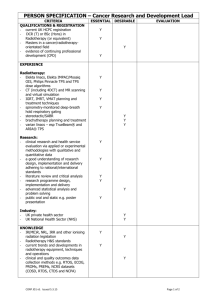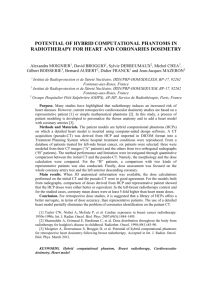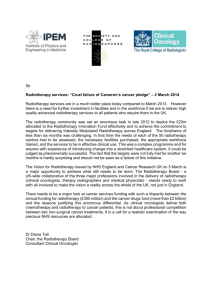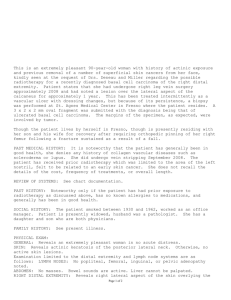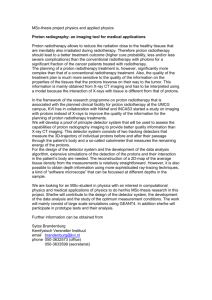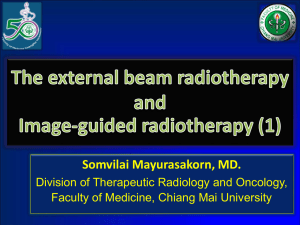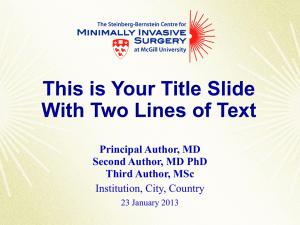Radiotherapy for Brain Tumours
advertisement
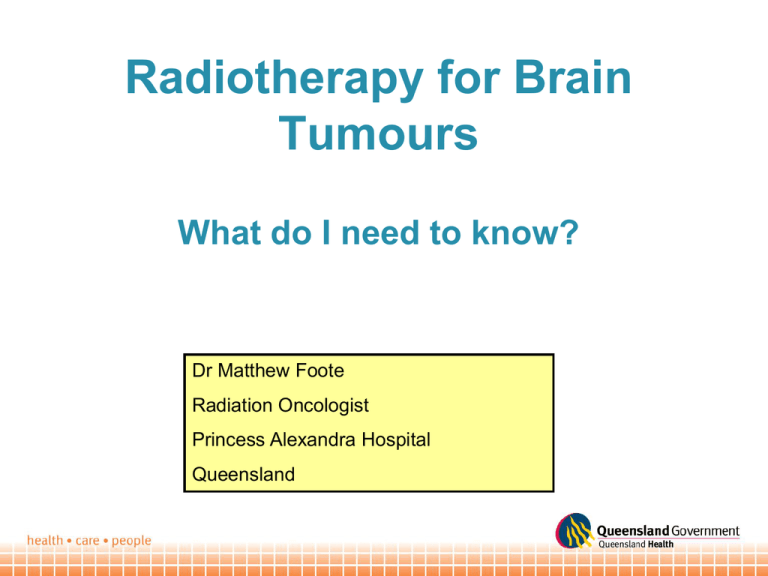
Radiotherapy for Brain Tumours What do I need to know? Dr Matthew Foote Radiation Oncologist Princess Alexandra Hospital Queensland Topics to cover • What is radiotherapy and how does it work ? • What are the different types of radiotherapy and how does this impact on me? • What are the common side effects ? • What are the most common questions asked by patients and carers? • What is new on the horizon? What is radiotherapy ? • Effective cancer treatment modality • High energy X-rays damage to tumour cells • Course of radiotherapy (treatment – fraction) How does it work ? • Ionizing radiation causes DNA breaks • Repair of normal tissue • Fractionation How does it target my tumour ? • Multiple beams • Complex dose shaping • Sparing surrounding structures What are the different types of delivery ? • Fractionated – Multiple small doses • Single dose (Radiosurgery) What are the machines and what does it all mean? • Linear Accelerator (Linac) • Tomotherapy • Gammaknife • Protons What is a linear accelerator (Linac) ? • Most common machine used to deliver therapeutic radiotherapy • Used for most treatments including brain tumours What about Tomotherapy ? • Beam as a fan • Similar to CT scan • Ability to spare normal tissue What about Gammaknife ? • Specific indications • Highly focussed stereotactic (ablative) techniques What about protons ? • Not currently available in Australia • Specific indications • May be superior in treating some paediatric brain tumours All of these machine names are confusing so what does it mean for me ? • Each have advantages and disadvantages • May better for treating some tumours • Need to discuss with your radiation oncologist what is the most appropriate. What is involved in having radiotherapy ? • Specifically for fractionated radiotherapy – Initial appointment – Planning of radiotherapy – Commencement of treatment Why is there a gap between planning and commencement of radiotherapy ? • • • • • Planning process Use multiple sets of images (MRI) Mark tumour and all important structures Design best treatment Check that the planned dose is what will be delivered • RADIATION THERAPISTS AND PHYSICISTS What to expect during treatment • Highly variable – – – – – – Location of brain Volume that needs to be treated Radiotherapy dose Time since operation Use of chemotherapy General health factors Most common on treatment effects ? • ON TREATMENT • • • • • • • • AFTER TREATMENT Tiredness • On going tiredness Headaches HearingWITH difficulties NOT ALL MAY OCCUR AND BEST •DISCUSSED RADIATION FACTORS Nausea ONCOLOGIST BASED ON•PREVIOUS Hormone function Hair loss • Longer term neurocognitive effects Skin reddening Hearing difficulties ‘neuro-cognitive’ effects Other common questions • • • • • Effects on carers and children Can I drive ? Will I be able to work ? Do I need someone with me at all times ? How do we know that the radiation is working What are some new advances that we should look out for? • Sparing parts of the brain – Enabled due to technological advances in delivery (Intensity Modulated Radiotherapy IMRT, tomotherapy and volumetric modulated arc therapy VMAT) Other advances in radiotherapy treatment of brain tumours • Utilizing better imaging techniques to better define target and normal tissue Other advances for the treatment of brain tumours ? • Interaction with targeted chemotherapy agents – bevacizumab (Avastin) • Re-irradiation of brain tumours Radiotherapy for Brain Tumours • Many changes driven by technology • Important for providers to educate • Active area of research • Better outcomes for patients and family Dr Matthew Foote – matthew_foote@health.qld.gov.au 5th ANNUAL SCIENTIFIC MEETING 7th – 9th August 2012 Sofitel Hotel Brisbane in conjunction with Medical Oncology Group of Australia ASM (8th-11th August)
